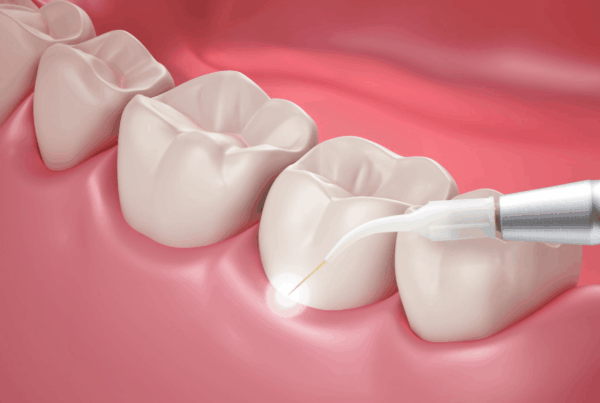Gum disease can be a silent threat to your oral health, often progressing without obvious symptoms until it becomes severe. Scaling and root planing is a highly effective treatment that targets the root causes of gum disease, helping to restore your gums to their healthiest state. Whether you’ve been advised by your dentist to undergo this procedure or are simply curious about how it works, this guide will walk you through everything you need to know—from what to expect during recovery to understanding the process itself.
 What Can I Expect After Scaling and Root Planing?
What Can I Expect After Scaling and Root Planing?
After a scaling and root planing procedure, it’s normal to experience some sensitivity and discomfort in your gums, particularly around the treated areas. This discomfort may include tenderness, slight swelling, and occasional bleeding, especially when brushing or flossing. These symptoms typically begin to improve after a few days as your gums start to heal and reattach to your teeth.
During the first 24 to 48 hours, you might notice that your gums are more sensitive to temperature extremes, so it’s a good idea to avoid very hot or cold foods and drinks. Eating soft foods and sticking to a gentle diet can also help minimize discomfort during this period. Some patients may experience a mild aching or throbbing sensation, which can usually be managed with over-the-counter pain relievers, such as ibuprofen or acetaminophen. Be sure to follow your dentist’s specific recommendations regarding pain management and any prescribed medications.
Oral hygiene is crucial during the healing process, even though your gums may feel tender. Continue brushing and flossing regularly, but do so gently to avoid irritating your gums. Your dentist may suggest using a soft-bristled toothbrush and an antimicrobial mouthwash to help reduce bacteria and promote healing. Avoid using tobacco products, as smoking can significantly delay healing and increase the risk of complications.
It’s also important to monitor your gums for any signs of infection, such as persistent swelling, increased pain, or the presence of pus. If you notice any of these symptoms, contact your dentist immediately, as early intervention can prevent more serious issues from developing.
Your dentist will likely recommend a follow-up visit within a few weeks of the procedure to assess your progress. During this appointment, they will check for signs of healing, measure the depth of your gum pockets, and determine if additional treatment is necessary. In some cases, further scaling or root planing sessions may be needed to fully address the gum disease, particularly if the initial treatment areas were extensive.
Overall, the success of scaling and root planing largely depends on maintaining good oral hygiene and following your dentist’s aftercare instructions. By doing so, you can expect your gums to gradually regain their health, leading to a stronger, healthier smile.
 How Long Does It Take for Scaling and Root Planing?
How Long Does It Take for Scaling and Root Planing?
The duration of scaling and root planing can vary significantly based on several factors, including the severity of your gum disease, the extent of plaque and tartar buildup, and the number of teeth affected. For patients with mild to moderate gum disease, the procedure is often completed in one to two visits. Each visit typically lasts between one to two hours, during which your dentist or hygienist will meticulously clean the surfaces of your teeth and the roots below the gumline.
If your gum disease is more advanced, or if the tartar buildup is extensive, additional visits may be required. In such cases, your dentist may choose to divide the treatment into quadrants or sections of your mouth, focusing on one area at a time. This approach not only ensures a thorough cleaning but also allows for more manageable treatment sessions, reducing the overall discomfort and recovery time. For example, your dentist might treat one half of your mouth during one visit and the other half during a subsequent appointment. This staggered approach can extend the treatment over several weeks.
In some instances, if the gum pockets are particularly deep or if there is significant bone loss, your dentist might recommend scaling and root planing over multiple appointments to allow for healing between sessions. This phased approach helps prevent overwhelming the tissues and allows your gums to start the healing process before additional areas are treated.
The time it takes for each session can also be influenced by individual patient factors, such as your pain tolerance, overall oral health, and how well you respond to the procedure. Some patients may require more time under local anesthesia to ensure comfort, which can slightly extend the duration of each visit.
Your dentist will provide you with a personalized treatment plan during your initial consultation, outlining the expected number of visits, the time required for each session, and any necessary follow-up appointments. This plan will also consider your schedule and comfort, ensuring that the procedure is as convenient and manageable as possible for you.
In addition to the in-office treatment time, it’s essential to factor in recovery time. While the procedure itself might only take a few hours, the healing process can span several days to weeks, depending on the extent of the treatment and your body’s natural healing response. Your dentist may recommend a follow-up visit a few weeks after the final session to assess the healing of your gums and the effectiveness of the procedure. During this visit, they may also evaluate the need for any additional treatments or ongoing maintenance to keep your gums healthy.
 Is Scaling and Root Planing Painful?
Is Scaling and Root Planing Painful?
Many patients are concerned about potential pain during scaling and root planing. While the procedure can cause some discomfort, your dentist will use local anesthesia to numb the treated areas, minimizing pain. After the procedure, you may experience mild discomfort or soreness, which can usually be managed with over-the-counter pain relievers. If you have concerns about pain or discomfort, be sure to discuss them with your dentist beforehand.
 Ready to Improve Your Oral Health?
Ready to Improve Your Oral Health?
Scaling and root planing is a crucial step in managing gum disease and maintaining a healthy smile. If you’re noticing signs of gum disease or have been recommended for this procedure, don’t wait. Schedule your appointment today to take the first step towards better oral health!







